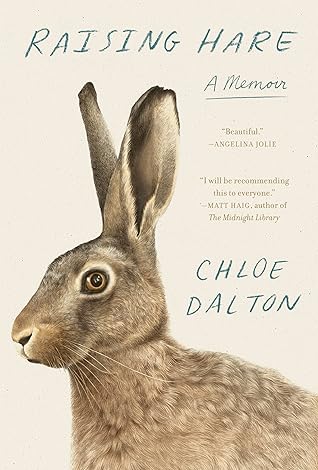More on this book
Community
Kindle Notes & Highlights
forty-two days and nights of a hare’s term.
forty-two days and nights of a hare’s term.
Siberians name hares by the time of their birth: nastovik (born in March, when snow is covered with crust), letnik (born in summer), listopadnik (born in the fall, when leaves fall from trees). —A. A. Cherkassov, Notes of an East Siberian Hunter, 1865
Siberians name hares by the time of their birth: nastovik (born in March, when snow is covered with crust), letnik (born in summer), listopadnik (born in the fall, when leaves fall from trees). —A. A. Cherkassov, Notes of an East Siberian Hunter, 1865
Moreover, he said that in decades of working on the land, he had never heard of anyone successfully raising a leveret. “You have to accept that it will probably die of hunger, or shock,” he said, speaking kindly but bluntly. “I’ve met people who have reared badgers and foxes, but hares cannot be domesticated.”
Moreover, he said that in decades of working on the land, he had never heard of anyone successfully raising a leveret. “You have to accept that it will probably die of hunger, or shock,” he said, speaking kindly but bluntly. “I’ve met people who have reared badgers and foxes, but hares cannot be domesticated.”
the most common cause of death in leverets in captivity is stress caused by noise and excessive handling.
each strand of its fur seemed to be marked in alternating shades of dark and light. This baffled me until I learnt that so-called agouti colouring—varying bands of pigmentation on an individual hair—is an essential feature of camouflage in hares and many other wild animals, evolved over thousands of years of natural selection.
a hare’s tail is not the round fluffy cotton ball of a rabbit, but a long stub that it can flick from side to side, fold underneath its hindquarters when it sits or extend out behind it when it lies down.
On average, only a quarter of all leverets reach adulthood, and sometimes, many fewer.
appearance, a rabbit’s head is rounder than that of a hare, as are its ears, which are also shorter and lack a hare’s distinctive black tips. Its eyes are entirely black, with no amber iris, and are set lower down on its head. Rabbit fur is generally grey in colour, compared to the brown, tawny pelt of most lowland hares. Rabbits have stocky bodies and short legs and necks, and they move with a scuttle and a jump, their white tails showing all the while, unlike the hare, which has a rangy stride and carries its tail pointing downwards with only the black surface showing. Most species of rabbit
...more
Hares, with their larger size, darker colouring and longer muzzles, are more reminiscent of dogs or small deer than they are of rabbits.
Hares, like other prey animals, can suffer capture myopathy—a form of fatal trauma in wild animals as a result of being caught and handled. They have been known to hurl themselves at cage bars and break their limbs or necks, dying in their desperate desire to escape unnatural confinement.
Are minds of men, become so voyde of sense, That they can joye to hurte a harmelesse thing? A sillie beast, whiche cannot make defence? A wretche? A worme that can not bite, nor sting? If that be so, I thanke my Maker than, For makying me, a Beast and not a Man.
a trapped or dying hare will emit a shattering cry, like a hurt child.
In Buddhism, there is a story about a hare sacrificing itself into fire for others.
much of the nature of animals is obscured from us simply because of the limitations of our senses and powers of observation.
I pondered the concept of “owning” a living creature in any context. Interaction with animals nurtures the loving, empathetic, compassionate aspects of human nature. It taps into a primordial reverence towards the living world and a sense of the commonality and connectedness across species. It is a gateway, as I was discovering, into a state of greater respect for nature and the environment as a whole.
medical terms, superfetation is defined as “the fertilization of a second ovum some time after the start of pregnancy, resulting in two foetuses of different maturity in the same uterus.”
wild oats would serve as a lure for trout.
brown hare selects grasses according to their energy content, seeking out those rich in fat and protein, and iron and calcium—such as the red fescue, creeping bent grass, and white and red clover
Curiosity, and their desire to draw near to activity, and to company, remain the most surprising qualities of the hare and her leverets’ endlessly inquisitive nature. Just as long as a hare can reserve its line of escape and retain the possibility of leaping away to outrun any unexpected threat, it appears unable to resist seeing what is happening and coming back again and again for the purpose.
To domesticate is to alter the nature of an animal in order to fit it into our way of life as humans. For innately wild animals such as the hare, a better way is to coexist.
She has taught me patience. And as someone who has made their living through words, she has made me consider the dignity and persuasiveness of silence. She showed me a different life, and the richness of it. She made me perceive animals in a new light, in relation to her and to each other. She made me re-evaluate my life, and the question of what constitutes a good one. I have learnt to savour beautiful experiences while they last—however small and domestic they may be in scope—to find the peace to live in a particular state of feeling, and to try to find a simplicity of self. The sensation of
...more


